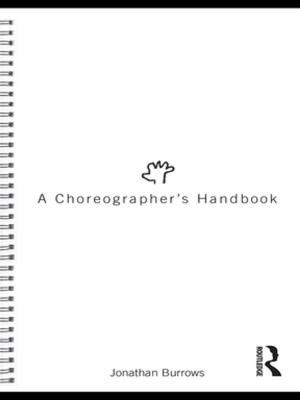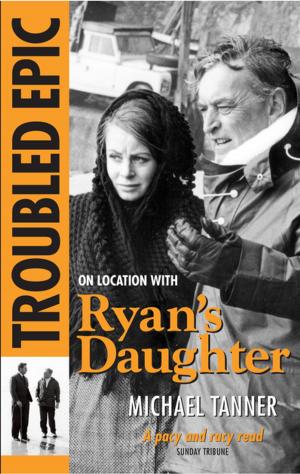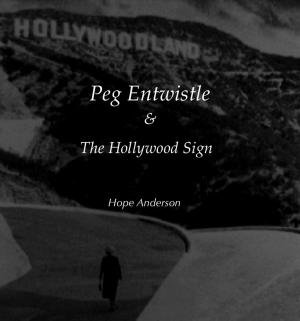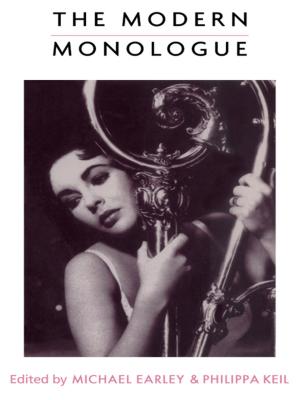Early Film Noir: Greed, Lust and Murder Hollywood Style
Nonfiction, Entertainment, Film, History & Criticism, Performing Arts| Author: | William Hare | ISBN: | 9781310401596 |
| Publisher: | William Hare | Publication: | May 26, 2015 |
| Imprint: | Smashwords Edition | Language: | English |
| Author: | William Hare |
| ISBN: | 9781310401596 |
| Publisher: | William Hare |
| Publication: | May 26, 2015 |
| Imprint: | Smashwords Edition |
| Language: | English |
It is fitting that film noir, a genre shrouded in dark suspense, in many ways owes its existence to two loners who linked their talents and created Hollywood movie history. The film noir genre has entertained worldwide audiences for three generations.
A slender, restless young man left his Los Angeles roots to find his identity elsewhere. Ultimately settling in Missouri, he was unable to secure anything resembling stability, moving from one job to another. He was periodically fired and rehired by a newspaper editor who liked him personally while less than awed by his professional performance.
The wandering eventually returned home. He ventured into the same realm where his father had made his mark – motion pictures. John Huston’s father Walter was one of the venerable character actors of stage and screen.
Walter Huston, one of the best liked Hollywood insiders, saw his son soar to the heights as one of filmdom’s leading screenwriters. At that point father gave son a piece of career advice that bore enormous fruit. Walter told John that the way to the top in the industry’s power machinery existed in joining the ranks of directors.
John Huston followed his father’s recommendation. He told his boss Jack Warner that he would like to direct. His story choice was an adaptation of Dashiell Hammett’s detective novel, The Maltese Falcon. The Warner Brothers chieftain balked that the Hammett work had been adapted to the screen twice and failed each time. Huston, a man accustomed to triumphing over adversity, insisted that it was the treatment of the work that caused the failures and that he could bring the story home in the winner’s column.
The story’s protagonist was a loner much like Huston. It was only natural that the leading man who portrayed brooding and wily San Francisco Detective Sam Spade was a loner who had been a brooding and restless young man just like Huston and had become a close friend of the screenwriter and director to be – Humphrey Bogart.
Bogart was perfect as Sam Spade and the 1941 Warner Brothers release became a huge success. Bogart proved so ideal that Jack Warner cast him to portray Los Angeles brooding detective loner Philip Marlowe. This time the film was The Big Sleep, an adaptation of a Raymond Chandler novel.
Raymond Chandler felt comfortable enough in the new genre that would eventually be called film noir to team up with director Billy Wilder on another comparable vehicle. The Wilder directed noir masterpiece was Double Indemnity with Barbara Stanwyck, generally cast as a solid and respectable lady, earning rave notices as a ruthless femme fatale who entices Fred MacMurray to help her murder her husband for profit.
The dark streets of night and the tense and macabre tales that lie therein are revisited in Early Film Noir, which provides readers with an inside look at some of the most fascinating stories and people breathing creative life into a dynamic genre. We see shrewd men of night such as Bogart and Robert Mitchum pitted against wily, glamorous and dangerous women such as Stanwyck, Jane Greer and Claire Trevor. Let the explosives begin!
It is fitting that film noir, a genre shrouded in dark suspense, in many ways owes its existence to two loners who linked their talents and created Hollywood movie history. The film noir genre has entertained worldwide audiences for three generations.
A slender, restless young man left his Los Angeles roots to find his identity elsewhere. Ultimately settling in Missouri, he was unable to secure anything resembling stability, moving from one job to another. He was periodically fired and rehired by a newspaper editor who liked him personally while less than awed by his professional performance.
The wandering eventually returned home. He ventured into the same realm where his father had made his mark – motion pictures. John Huston’s father Walter was one of the venerable character actors of stage and screen.
Walter Huston, one of the best liked Hollywood insiders, saw his son soar to the heights as one of filmdom’s leading screenwriters. At that point father gave son a piece of career advice that bore enormous fruit. Walter told John that the way to the top in the industry’s power machinery existed in joining the ranks of directors.
John Huston followed his father’s recommendation. He told his boss Jack Warner that he would like to direct. His story choice was an adaptation of Dashiell Hammett’s detective novel, The Maltese Falcon. The Warner Brothers chieftain balked that the Hammett work had been adapted to the screen twice and failed each time. Huston, a man accustomed to triumphing over adversity, insisted that it was the treatment of the work that caused the failures and that he could bring the story home in the winner’s column.
The story’s protagonist was a loner much like Huston. It was only natural that the leading man who portrayed brooding and wily San Francisco Detective Sam Spade was a loner who had been a brooding and restless young man just like Huston and had become a close friend of the screenwriter and director to be – Humphrey Bogart.
Bogart was perfect as Sam Spade and the 1941 Warner Brothers release became a huge success. Bogart proved so ideal that Jack Warner cast him to portray Los Angeles brooding detective loner Philip Marlowe. This time the film was The Big Sleep, an adaptation of a Raymond Chandler novel.
Raymond Chandler felt comfortable enough in the new genre that would eventually be called film noir to team up with director Billy Wilder on another comparable vehicle. The Wilder directed noir masterpiece was Double Indemnity with Barbara Stanwyck, generally cast as a solid and respectable lady, earning rave notices as a ruthless femme fatale who entices Fred MacMurray to help her murder her husband for profit.
The dark streets of night and the tense and macabre tales that lie therein are revisited in Early Film Noir, which provides readers with an inside look at some of the most fascinating stories and people breathing creative life into a dynamic genre. We see shrewd men of night such as Bogart and Robert Mitchum pitted against wily, glamorous and dangerous women such as Stanwyck, Jane Greer and Claire Trevor. Let the explosives begin!















